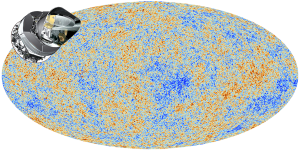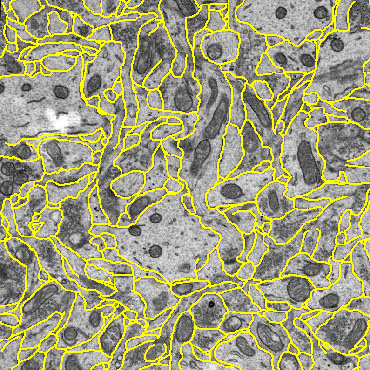
I’m a cosmologist working at the interface of cosmological theory and data analysis. The main goal of my research is to find new ways to test and constrain fundamental physics with cosmological data. The initial perturbations of the universe are believed to have been created by a quantum process, and the statistical properties of the resulting density field contain information about the ultra high energy physics of the primordial universe.
Recently I have been working on different aspects of the idea of finding or constraining massive states during inflation. In principle the density perturbations created by inflation are sensitive to much higher masses than could ever be probed with a terrestrial collider and thus “cosmological collider physics” could give unique insights into ultra high energy physics. In many cases such a measurement would require futuristic experimental data and I have worked on forecasting the sensitivity of different experimental setups. For some theoretical models, even current CMB data can be used to obtain interesting and new constraints on massive states. In ongoing work I am searching for such signatures in Planck and WMAP CMB data. Cosmological collider physics (or non-gaussianities) is still a very young field and I believe there will be interesting developments in the years and decades to come. I am also interested in the challenging subject of discriminating primordial and secondary non-gaussianities, for large-scale structure surveys and other probes.
Another recent line of my research is exploring the cross-correlation of CMB and matter data induced by the kinetic and polarized SZ effects. Together with colleagues at PI we explored new estimators that provide information about the ultra large-scale structure of the universe. These estimators can be used to search for unexpected anisotropies, or provide consistency checks for our understanding of the universe.
For data analysis, the focus of my research over the last years has been to extract information about the big bang from data of the Planck satellite. This experiment measures the so called Cosmic Microwave Background (CMB), which can be understood as an afterglow of the big bang. It therefore contains invaluable information about the physics of the beginning of the universe. I am a member of the data analysis team for early universe physics of the Planck experiment. My work involves both theoretical calculation of the signals of interest, and development of statistical techniques to search for these signals.
The most successful theory of the big bang is called inflation and comes in a huge variety of models. Nobody knows which (or if any) of these models is correct. Physicists like me are therefore examining how different theories of the big bang can be tested with cosmological data, like the one from the Planck satellite. A focus of my work have been inflation models that induce oscillations in the statistical properties of the CMB data. Such oscillations are for example predicted by some string theoretical models of inflation. It would be marvellous if we were to detect such a “smoking gun” signal that would guide us to the right theory. What we can do for now is excluding those theories that disagree with the data that we already have.
Machine Learning
Part of my research is in astrophysical data analysis and I am often applying statistical methods, including likelihoods, Bayesian analysis, and MCMC to physical models and data sets. For example I am searching for ways to reduce the computational complexity of a difficult analysis (see for example this paper), or for methods to combine different data sources to test a hypothesis (this paper).

A long term interest of mine is Machine Learning and Artificial Intelligence (I also minored in robotics). I have co-founded Wolution, an online image analysis platform that offers deep learning for scientific image analysis. One of my contributions is a CNN based pixel classifier implemented with tensorflow that now runs in production on www.wolution.com. Wolution also runs a number of modern image analysis algorithms including Deeplab, R-CNN and Mask R-CNN with different neural network architectures, and part of my job at Wolution is to include new algorithms in our computing engine.
I am also working on applying Machine Learning to cosmology and have several ongoing projects in this domain. Cosmological data analysis is becoming increasingly sophisticated and I believe that Machine Learning will be a crucial component in fully exploiting the huge amounts of data from upcoming cosmology experiments like CMB S4 and LSST.
A recent project of mine was to use Machine Learning to learn Wiener Filtering, a basic but important task in cosmological data analysis. Our paper includes a number of interesting ideas for the network architecture and loss function, that are not part of the standard deep learning toolbox. With our network, Wiener Filtering is a factor of 1000 faster than with the previous method, with minimal loss of precision.